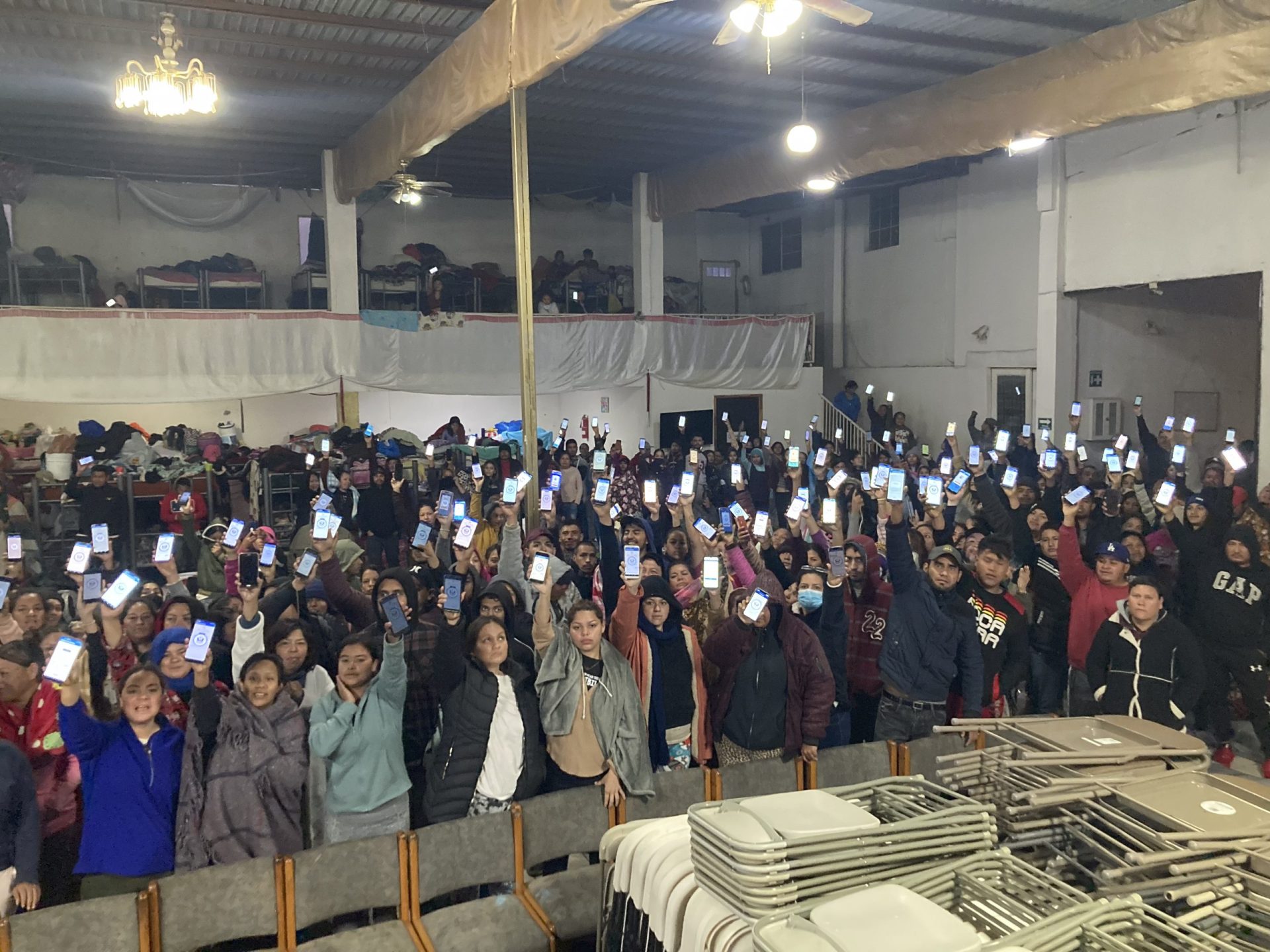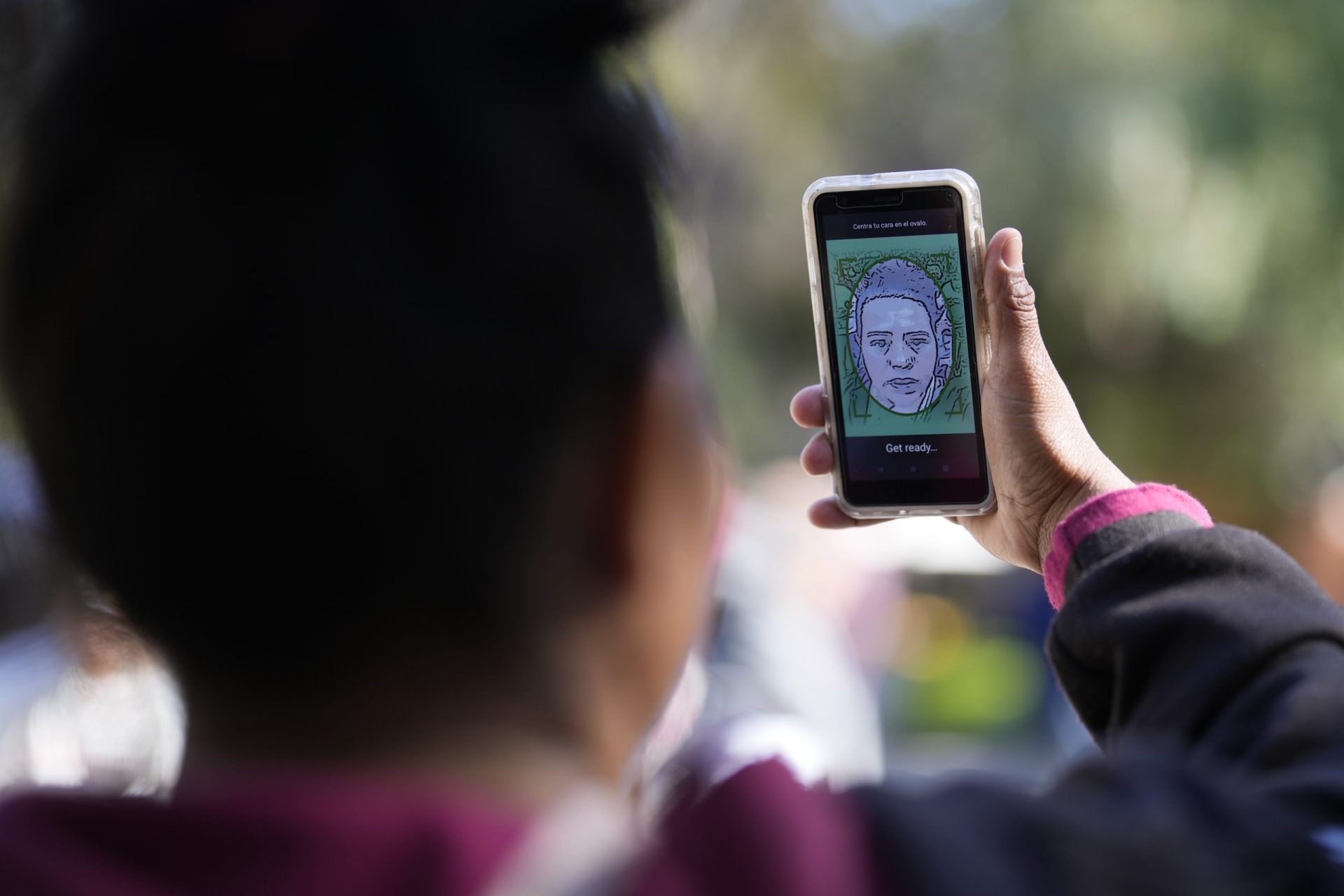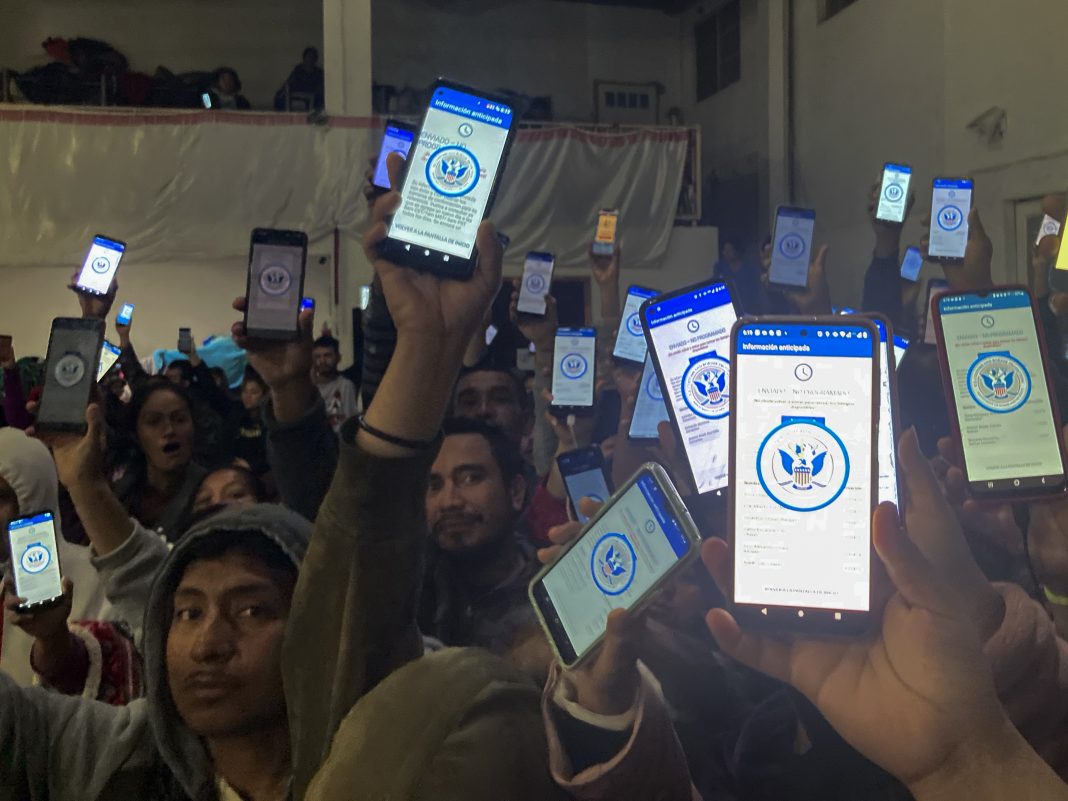Before it was really sporadic hearing about a family, all of them getting on the same appointment. It was very rare.
A recent update to a federal government phone app now allows families seeking asylum to find appointments to request asylum together, an improvement to the system that pushed others to separate at the border.
One cloudy day last Thursday, a spontaneous outburst of joy between four Haitian men in the streets of Reynosa was caught on film. A tangle of legs and arms flapped up and down in unison as three men hugged each other, laughing and celebrating until one tumbled down on the road with his arms held up to the sky and a grin covering his face.
The jubilant scene broke out when a family of five finally received an appointment through the U.S. Customs and Border Protection app to seek an exception from the current border policy, known as Title 42 which began turning asylum seekers back to Mexico when the pandemic began in 2020.
It stood in stark contrast to the picture of families torn apart by the same device that was tainted with glitches, namely, it made it rare to grant appointments to whole families forcing many to consider splitting up parents and children.
“Last week was the first week we really started hearing family after family was getting an appointment,” Felicia Rangel-Samponaro, co-founder of the Sidewalk School, a nongovernmental organization helping migrants in Tamaulipas, recalled Tuesday. “Before it was really sporadic hearing about a family, all of them getting on the same appointment. It was very rare.”
Problems with the app began from its release when users cited problems with the required live facial recognition portion, geofencing, and language options which led to a disproportionate effect on families who needed more than one slot and Haitians who did not speak English or Spanish.
The consequences were observed by the lines of people who formed at the international bridges for their scheduled appointments.
“What we were seeing was devastating,” Rangel-Samponaro said. “Families being separated, Black people not crossing at all. Dark skin, brown people were not crossing. So the app was not fair. It wasn’t fair to families and it wasn’t fair to minorities, essentially.”
Advocates like Rangel-Samponaro’s Sidewalk School voiced their concerns to the federal government.
A CBP spokesperson told The Monitor on Tuesday CBP continues to make improvements to the CBP One™ mobile application based on stakeholder feedback, including an update of scheduling for groups or family units.

Improvements include combined appointment blocks and clarification on the submission process for families. The app now allows users to create one profile for all family members in that registration and while photos are required for the family, only one photo, a selfie, can be used instead of a live photo which was part of the process before.
“Initially when the app came out, you had to do live photos of all the family members. And that’s an issue if you have a child under five, or if you have a disability, like autism,” Rangel-Samponaro explained. Parents of newborn babies had trouble keeping the eyes of their children open long enough for the live photo.
Black asylum seekers also experienced significant problems with the facial recognition technology that had trouble with darker features, Rangel-Samponaro said. “So we pushed back on that,” she added.
The exceptions continue to be processed.
According to the most recent data released through a lawsuit filed in Louisiana, about 5,234 people had these appointments in Brownsville in February. The busiest port of entry was in California with 5,500.
Although Rangel-Samponaro saw few appointments for families and Black asylum seekers initially, she noted changes over time.
“The past few weeks, the lines for crossing have been over 50% Black people. I mean, that was from zero,” she said.
CBP also reported that more than half of Title 42 exceptions processed since January are families.

The app still needs work, Rangel-Samponaro said and suggested the government provide a guide to help people know how to navigate the multi-step process.
Meanwhile, Rangel-Samponaro and the Sidewalk School will be working to address another aspect affecting migrants using the app: internet access.
Many who sit by the international bridge to pick up a wifi signal are often connecting to towers on the U.S. side, a problem for the app that geofences users to the border.
“It puts them in the US, which automatically kicks them out [of the app] with an error message, because you’re not really in Mexico,” Rangel-Samponaro said.
The organization is seeking assistance and contributions from donors to help purchase wifi service for the encampments in Tamaulipas.





